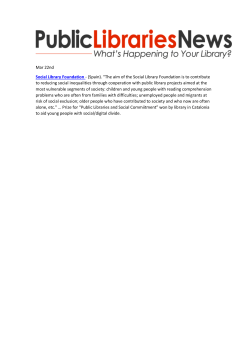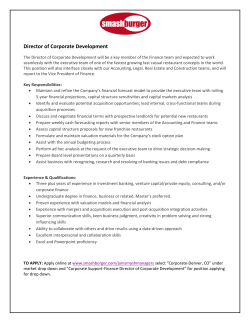
Lecture 11
Psycholinguistics Lecture 11 Applied Linguistics BBN-ANG-261 Brózik-Piniel, Katalin ELTE-DEAL Overview Definition and scope The brain and language Language acquisition revisited Language production Speech production models Bilingual speech production Language comprehension Functional areas of the brain Memory Bottom-up Top-down Language loss 1 Definition and scope (1) “Psycholinguistics is sometimes defined as the study of language and the mind. As the name suggests, it is a subject which links psychology and linguistics. The common aim of all who call themselves psycholinguists is to find out about the structures and processes which underlie a human’s ability to speak and understand language.” (Aitchison, 2008, p. 1) Definition and scope (2) Psycholinguistics investigates the following: How are languages learnt? How is language produced? How is language comprehended? How are languages forgotten? 2 Definition and scope (3) Diachronic Synchronic Synthesis Acquisition Production Analysis Dissolution Comprehension Functional areas of the brain (1) 3 Functional areas of the brain (2) Broca’s area is responsible for the production of words and sentences. Wernicke’s area for the processing of most speech and language. “Any particular linguistic function ... relies on the simultaneous activation of multiple, disparate cortical areas” (Rohkamm, 2004, p. 124). Experiment Study the following list of words for 30 seconds and try to remember the words that appear in it. Write down the words you recall. 4 List smell both edge plant worst throw really science choose break straight quite twelve lunch part cheap Memory (1) Working memory (WM, previously: short-term memory) Long-term memory (LTM) 5 Memory (2) Working memory Has limited capacity Phonological loop: a) b) phonological store rehearsal mechanism Visuo-spatial sketchpad Central Executive: directs operations chunks information (7±2 pieces of information) replaces verbatim information with abstract propositions transfers important information to LTM before it decays determines attention (if form-meaning connections become automatic, less attention is needed) Language acquisition revisited 6 Language acquisition (1) Exemplar view Linguistics knowledge is constructed on the basis of traces of multiple encounters with the features in question (examples) stored in the LTM (Bybee, & Hopper, 2001). Language acquisition is emergent: it consists of accumulating random samples (or examples) of language and generalizing across them. Language acquisition (2) L1 Crying Cooing (2 mths) Babbling (6 mths) Idiomorphs (12 mths) Single word sentences (12-18 mths) Creative use (UG) 7 Language acquisition (3) Skills-based cognitive approach Transformation of declarative knowledge (i.e., knowing that) into procedural knowledge (i.e., knowing how) Connectionist (cognitive) approach learning is strengthening connections between neurones (“she” + “s”) Language acquisition (4) Processability Theory (Multidimensional model of LA) 8 Language acquisition (5) Processability theory Procedures at the lower levels are prerequisites for the processes at the higher levels. Consequently, the order of production is the same as the order of acquisition. Language acquisition (6) Basic assumptions on L2 acquisition: Shared cognitive processes (cf. L1) Same cognitive resources available Acquisition mechanisms are universal across languages 9 Language production Language production models (1) Monolingual models of speech production Spreading activation models Modular models (New approaches: convergence of the two (Kormos, 2006)) 10 Language production models (2) Spreading activation models Activation process: many cues are considered, but the ones that fit the evidence best will be chosen On encountering one word, closely linked words are also activated Allow for parallel processing at the various levels Language production models (3) Modular models of speech production Consists of processing components that are relatively independent within the system Information processing flows from one module to the next 11 Language production models (4) Levelt’s model Conceptualiser: planning the message, deciding on the meaning one wants to convey. Syntactic, lexical and phonological encoding of the message: Grammatical encoding: syntactic frame, selection of lexical item (from the mental lexicon) that matches the concept Phonological encoding: string of words Phonetic encoding: adjustments to make articulation easier Articulator: production of speech sounds Self-monitoring: checking the correctness and appropriateness of the produced output (Levelt, 1999) 12 Four steps of speech production according to Levelt (1999): Conceptualization Formulation Articulation Monitoring Evidence for lemma (semantic and syntactic information) and lexeme (phonological information) distinction: tip of the tongue phenomenon 13 Which animal is easier to name in English for a Hungarian speaker? KEDD KUTYA Which object is easier to name in English for a Hungarian speaker? 14 Other phenomena that reveal how we formulate messages Spoonerisms: slips of the tongue in which an actual word or phrase is created often with a humorous twist to the intended meaning. William Spooner (Victorian cleric and teacher): ”You noble tons of soil” ”You have hissed all of my mystery lectures; in fact you have tasted the whole worm!” Bilingual speech production (1) Does the activation of L1 items spread over to the phonological level? Yes.(codeswitching – psycholinguistically motivated) Are only L2 items activated in the lexicon, or do L1 items also receive activation? Both. (Subset hypothesis, cognates) Are there parallel speech plans? No, each concept is labelled with a [language] tag (de Bot & Schreuder, 1993). Are there separate semantic and conceptual levels of representation in the bilingual lexicon? We don’t know. (Kormos, 2006) 15 Bilingual speech production (2) L2 learners’ knowledge of the target language is rarely complete; therefore, they have to resort to communication strategies. In bilingual speech production, there is an effect of the “other” language (mostly L1). Slower L2 production: L1 speech production mechanisms can run in parallel when producing L1 speech, but speech production is only partially automatic in L2 (Kormos, 2006) speech production. Bilingual speech production (3) Decision which language to speak is made during planning the message. A language cue is added to concepts. L1 and L2 words are stored in a common mental lexicon. L1 and L2 lexical entries compete for selection. Syntactic information related to L2 words is stored separately. Syntactic processing (in L2) is often conscious. L2 speakers often substitute similar L1 phonemes with L2 phonemes. L1 and L2 phonemes are probably stored together. Articulation mechanisms are almost impossible to modify after the critical period. 16 Language comprehension Comprehension: Bottom up (1) 1. 2. 3. 4. 5. Vocal cords and the mouth produce a sound wave. Sound wave is picked up in our ears and is translated into a neural signal. (Voice Onset Timing) Brain translates the neural signal into phonemes. Phonemes are combined to form words.(Lexical segmentation) Words combine to form sentences. 17 Comprehension: Bottom-up (2) Logogen model of comprehension: when hearing/seeing a word a lexical detection device (recognition unit) is activated for that word (in concert with others contributing to comprehension) (Scovel, 1998) Comprehension: Bottom-up (3) The shortlist model of word recognition (Norris, 1994, 2005) 18 Comprehension: Bottom-up (4) Text: mental model John was on his way to school. He was terribly worried about the maths lesson. Last week, he had been unable to control the class. It was unfair of the teacher to leave him in charge. After all, it’s not usually part of a caretaker’s duties. (Field, 2003, p. 82) Comprehension: Top-down (1) Phoneme restoration effect: It was found that the _eel was on the axle. It was found that the _eel was on the shoe. It was found that the _eel was on the orange. (Scovel, 1998, p. 51) 19 Comprehension: Top-down (2) Recognition of sounds Listeners are often unaware of the missing phoneme and are able to understand the sentence and report “hearing” the complete word. Consequences: context influences word perception. It is lexical context that influences perception of phonemes and not the sentence context. Comprehension: Top-down (3) Recognition of words Words that are frequent are recognized more quickly than words that are infrequent. People are quicker to decide that a given target is a word than to recognize it as a nonword. Words in context are recognized more quickly than isolated words. 20 Comprehension: Top-down (4) Are the following sentences true or false? Please, raise your hand as soon as you know the answer: 1. It’s true that Wednesday always comes after a day that is a Tuesday. 2. It’s not true that Wednesday never comes after a day that’s not a Tuesday. Comprehension: Top-down (5) Texts: schema framework You have 15 seconds to read the untitled passage that follows. “You wander around, looking high and low, and fill up a metallic container. Some people know in advance what to put in; others just make things up as they go along. Two important tips. Make sure that you know what today’s date is, as it can prove helpful. And don’t put hard things on soft. Take the container and unload it on to a rubber surface. The contents travel a short distance. Each of the objects, round and square, big and small, has to be put on to a piece of glass. Sometimes weight will be an issue, and money will certainly have to change hands.” (Field, 2003, p. 41) 21 Comprehension: Top-down (6) Texts: schema framework Title: “In the supermarket” “You wander around, looking high and low, and fill up a metallic container. Some people know in advance what to put in; others just make things up as they go along. Two important tips. Make sure that you know what today’s date is, as it can prove helpful. And don’t put hard things on soft. Take the container and unload it on to a rubber surface. The contents travel a short distance. Each of the objects, round and square, big and small, has to be put on to a piece of glass. Sometimes weight will be an issue, and money will certainly have to change hands.” (Field, 2003, p. 41) Language loss 22 Language attrition (1) Language attrition: the loss of linguistic abilities. Language loss can take various forms depending on what language is lost and in what environment. Language attrition (2) Types of language loss (van Els) what is lost (L1/L2) where it is lost (in L1 or L2 environment) 23 Language attrition (3) van Els: Taxonomy of possible attrition Language environment (L1) Language environment (L2) L1 loss L1 (e.g., aphasia) L1 (e.g., minority communities or immigrants) L2 loss L2 (e.g., language learners) L2 (e.g., older immigrants who revert to their L1) Language attrition (4) Variables affecting language attrition: Age Level of Proficiency Literacy 24 Language attrition research (1) The higher the degree of attainment the lower the degree of attrition. Major forgetting occurs in the first five years following training; what remains is immune to loss for about 20-30 years. Reading and listening skills are forgotten less than speaking and writing. The most remarkable change is in oral fluency. Vocabulary is forgotten more easily than grammar. Language attrition does not mean complete forgetting but that the information learnt is not accessible any more. What one knew earlier is easier to relearn than learning completely new information. Questions What is working memory? What is a lemma? What is a cognate? What types of attrition can we talk about? 25
© Copyright 2025









